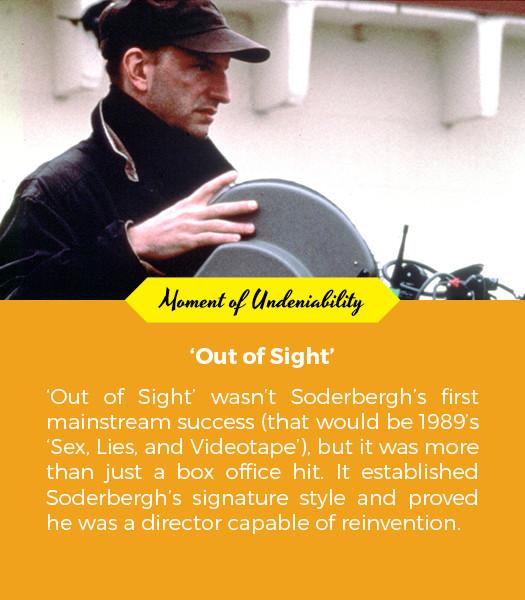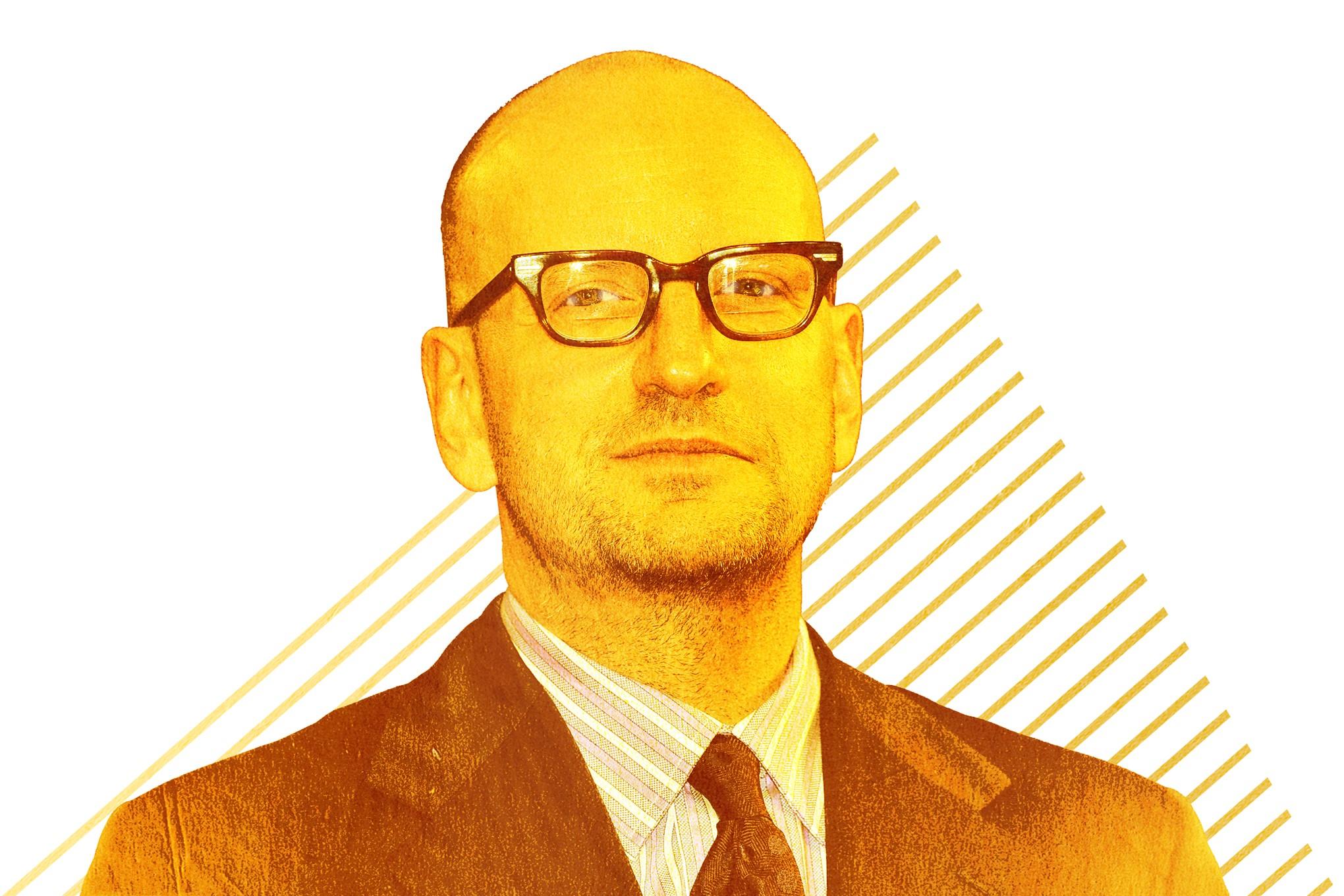In the Internet Age, monoculture is unachievable. But there remain a few things we can all agree on. The Ringer is looking at this rarefied group all week. These are our Undeniables.
New York, 1900. A doctor in a crimson-and-gold-hued Chinatown den kicks back in his fabulous white shoes — fly, high, magnetic, repulsive. It’s a beautiful image, but never mind: Dr. House, your trope is calling.
If the measure of art were the stark originality of its subject, The Knick wouldn’t be worth a mention. This turn-of-the-century TV medical drama is nuanced and fresh in other ways, unusually robust with plot and history for a Steven Soderbergh project, but we’re here to play witness to an antihero’s misadventures. If we couldn’t tell that from the dingy, electric setting and those white shoes, how about what comes after? A clear-eyed view of the doctor’s track-marked, scab-scattered feet.
That’s Steven Soderbergh for you. Leave it to him to treat a pair of shoes like Chekhov’s gun: They were bound to come (go) off. They’re signatures of the character’s style, but style, in the Soderbergh universe, is always on the way to something else — a Slip’N Slide to subtext. You’re not just a male stripper: You’re pleasure in a bad economy. You’re not just James Spader in tight jeans: You’re the impotence of the middle class. Not that this makes him some sort of revolutionary. Twenty-seven years into his feature-film career, Soderbergh would be the first to admit that he does not reinvent the wheel. And he’d hopefully be the first to point out that with his skill for custom finishes, he doesn’t need to.

He trusts in old forms (thrillers and procedurals, musicals, biopics, workplace dramas) and confirmed masters (Elmore Leonard, Andrei Tarkovsky, Mike Nichols, Howard Hawks, William Wyler). The central irony of his career is that his worship is never distorted into imitation. By all accounts, it should have. Much of his work is an implicit homage to the 1970s iteration of genre, and to that era’s unabashed excess. But unlike many of our most beloved ’70s filmmakers, the 53-year-old Soderbergh’s style looks forward, not back. How lucky is it that his Ocean’s trilogy, kicked off in 2001 and concluded in 2007, largely preceded our modern franchise fever and, thus, franchise fatigue? Then again, would we have cared? The movies have more stars than a bowl of Lucky Charms and the fleet-footed levity of movies half their size. They feel prescient: predictive of the best moments in the Avengers movies, for one, and of the Avengers trend in itself, the star-studded "hang-out movie"–ish franchise phenomenon.
The Knick is nearly enough in line with his usual habits and obsessions that it initially seems like Soderbergh doing Soderbergh — more of the same, not that most of us would complain. It may be a sign of his influence that, by now, those familiar flourishes also seem like TV being TV, as in the case of the pulsating electronica of the show’s soundtrack, a staple of Cool Television and, for that matter, Cool Movies. Soderbergh is not one to wipe a show clean of his prints; he’s everywhere. The performances of Clive Owen, Juliet Rylance, André Holland, Eve Hewson, and a great many others are neither too modern nor too periodized — they’re measured, even when angered, and comparatively relaxed even when in the heat of melodrama. Soderbergh. The show’s medical scenes are bloody as a slaughterhouse floor, yet they’re rapt, too, wide-eyed with anatomical and procedural detail. Soderbergh. The grotesque images of splayed-open wombs and torn intestines and, God, those syphilitic faces, are knowingly audacious. But they’re less concerned with provocation than they are with their own ability to show things as they are. Soderbergh.
And why not? Out of the sum of all these familiar habits, plus the subject, plus the universe of microscopic nuances, emerges something remarkable. It’s there from the very start, in that opening image of Dr. Thackery’s shoes.
Our hint is the light. Whether candlelit, or electric, or streaming in from outside in washes of bright gray, as in the operating theater, our eyes are always drawn to the light. We always know where it’s coming from; we always know the nature of the source — natural, candle, electric. That light is telling a story. In a modernizing world one notices these details because they soon come to signify definitive rifts. The subject of the show is the difference between a hospital with electricity and one without, a hospital for the rich (who can pay their bills) versus one for the poor (who cannot), and what — and who — it takes to be one and not the other. It is a show, in other words, about becoming modern. It is about the emergence of new medical technologies, the rise of economic progressivism (and the social and political trends that came with it), electricity, power, ethnic Protestantism, the new black professional class, the New Woman.
Technology and social progress are tangled, contingent waves, bumped forward through history. But you don’t need to say that outright when Soderbergh gives you this: an electrical crew removing newly installed lights as an expelled black physician exits the building, and the same crew reinstalling those lights, which hum and glisten with new power, when he decides to come back. Progress begets progress.

Soderbergh’s style has been peculiarly modern since the beginning of his career, when his Palme d’Or–winning debut, Sex, Lies, and Videotape, reinvigorated American independent cinema with its distinctly forward, seemingly European sexual attitudes. And he’s always had an empathic fascination with masters at work, fallible men and women who could make even tragic heroism look like the easiest, most natural thing. The Knick is full of such people: medical magicians, an eminent businesswoman, Thomas Edison.
Lately he’s become more interested in putting the worlds of these masters in flux, and what creeps in from offscreen is more immediate and, for the director, more personal. The Knick is the story of an institution forced to adapt to a shifting world, told from the back door and the basement floors — a story Soderbergh knows firsthand. As he recounted in a now-famous talk on the state of the industry, when he tried to get a Hollywood studio to finance Behind the Candelabra, about the six-year affair between the campy show-pianist Liberace and his young lover Scott Thorson, he couldn’t. No studio wanted it. "The feeling amongst the studios was that this material was too ‘special’" (read: too gay) to gross the $70 million it’d need to make up for the costs of making and distributing the movie. Brokeback Mountain, one of the most lucrative gay movies of all time, cost $14 million, compared to Candelabra’s projected $35 million. Brokeback Mountain grossed $83 million.
"The obstacle here isn’t just that special subject matter," Soderbergh argued, "but that nobody has figured out how to reduce the cost of putting a movie out." Well, HBO did in 2013, and the result was a marvel: a bright and Botoxed tribute to an era that was curtailed by changing tastes, shifting industry priorities, and, tragically, the AIDS crisis. In Magic Mike, another film about an entertainer, a male stripper learns to recognize his place low on the social and economic food chain, which, given his profession, starts to feel like a treatise on the positions of pleasure and entertainment. The viral outbreak thriller Contagion is a 100-meter dash in which biology, policy, and information are the competitors, with a new, biologically adaptive plague forcing government institutions to learn how to, well, adapt.
I never said he was subtle! Has Hollywood gotten the hint? Soderbergh has said more than once that entertainment is just that, yet also praised Hollywood for its incubation of problem solvers and criticized it for not solving some of its biggest problems. His work has always been equally hospitable to heavy analysis and pure, unthinking pleasure. I can’t help but watch for the rich fuck you that always seems to lurk right beneath the surface, for the beauty of a show that feels as personal and self-reflexive as it does richly historical, as real as it does imagined. It is about exceptional people surviving the tides of their moment.
What comes next for our own survivor? A Channing Tatum movie, of course — one that studios fought over this time — and hopefully starring more of the wizards like the ones populating the rest of his movies (clear your calendar, George Clooney). They are avatars of Soderbergh himself, but different enough that his regard for them isn’t masturbation.
And after that? Will he make yet more movies? Who knows? He’s a hobbyist painter now, and I don’t think he minds getting to spend quality time with his cats. He sells brandy. I also don’t see him not working; I don’t know him, but I don’t see that for him. Then again, there’s no predicting the future — least of all for a guy like this. But you know, you trust, that he sees it. You know he’ll be a part of it. And you know you’ll want to join him.
